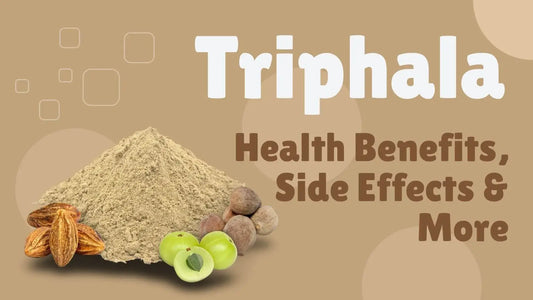
Type 1 Diabetes vs Type 2 Diabetes: Key Differences, Causes, Symptoms & Treatment
Diabetes is a worldwide condition with its onset quite higher in India. According to reports, India is one of the seven countries of the IDF SEA region. 537 million people worldwide and 90 million people in the SEA Region have diabetes; by 2045, this will rise to 151.5 million.
These big chunks of numbers are directed towards the need to manage diabetes well. But before that, it’s important to first identify the type of diabetes: whether you have Type 1 or Type 2 diabetes.
Both type 1 and type 2 diabetes are managed differently. Let’s learn through this blog about the difference between type 1 and type 2 diabetes and how they can be treated.
What is Diabetes?
Diabetes is a chronic condition in which the diabetic person’s pancreas does not produce enough insulin, or when the body doesn’t efficiently utilise the insulin it produces. Now you must be wondering what’s insulin?
Insulin is very important for the body. It is a hormone the body uses to allow sugar (glucose) to enter cells to produce energy.
When there isn't enough insulin or the pancreatic beta cells stop responding to insulin, a larger concentration of blood sugar stays in your bloodstream.
Over time, this leads to various health problems, such as heart disease, vision loss, kidney disease and a rise in blood sugar level. This increased concentration of glucose in the blood is recognised by a condition called hyperglycaemia.
There are basically three types of diabetes- Type 1, Type 2 and gestational. We have talked about gestational diabetes in one of our blogs. Let’s now discuss type 1 and type 2 diabetes.
Understanding Type 1 and Type 2 diabetes
What is Type 1 diabetes?
Type I Diabetes Mellitus, also recognised as Insulin Dependent Diabetes Mellitus, childhood onset or juvenile diabetes Mellitus, is a diabetes condition in which the body doesn’t produce enough insulin required for normal functioning.
In Type 1 diabetes, the body’s immune system mistakenly attacks and destroys the insulin-producing beta cells in the pancreas. As a result, the body is unable to produce insulin, a hormone necessary to regulate blood sugar (glucose) levels.
This form of diabetes is usually diagnosed in children, adolescents, or young adults, which is why it was previously called “juvenile diabetes.” However, it can develop at any age. Unlike type 2 diabetes, type 1 diabetes can’t be cured but can only be managed.
What is Type 2 diabetes?
Type II Diabetes Mellitus, also recognised as Non-Insulin Dependent Diabetes Mellitus or adult-onset diabetes, occurs when the body doesn’t efficiently utilise the insulin it produces.
In this condition, it becomes harder to keep blood sugar at normal levels. It develops over many years and is usually diagnosed in adults. It is usually Lifestyle/diet-related, with a greater occurrence in adults. It is managed well with lifestyle and oral hypoglycemics
Key Differences: Type 1 vs Type 2 Diabetes
| Basis of Difference | Type 1 Diabetes | Type 2 Diabetes |
|---|---|---|
| Causes | Autoimmune disorder, little or no insulin production, genetic and environmental factors | Insulin resistance, lifestyle factors |
| Risk factors | Less risky due to genetic or autoimmune factors | More risky, due to modifiable factors like obesity, lifestyle, and age |
| Onset of Symptoms | Symptoms typically develop quickly, often over a few weeks. | Symptoms develop slowly and can be easy to miss; some individuals may not notice any symptoms for years. |
| Age of Onset | Often diagnosed in childhood, but can occur at any age; more likely to be diagnosed under 40. | Risk increases with age; more common in individuals over 40, but can occur earlier too. |
| Cure and Prevention | Currently, there is no cure for Type 1 diabetes, but research is ongoing. | Type 2 diabetes cannot be cured, but there is evidence that it can be prevented and, in many cases, managed through lifestyle changes. |

Symptoms of Type 1 and Type 2 Diabetes: How to Tell the Difference?
For a better understanding of the difference between type 1 and type 2 diabetes, let’s first understand their symptoms separately.

Symptoms of Type 1 diabetes
Type 1 diabetes symptoms usually take a few weeks or even days to show. Common signs and symptoms of Type 1 diabetes include:
-
Increased thirst and frequent urination
-
Extreme hunger
-
Decrease in weight
-
Feeling tired and weak often
-
Blurred vision
-
Irritability or frequent mood changes
-
Nausea and vomiting
-
Bed-wetting in children who previously didn’t wet the bed
If left untreated, type 1 diabetes can lead to a dangerous condition called diabetic ketoacidosis (DKA), a medical emergency.
Symptoms of Type 2 diabetes
Type 2 like Type 1 diabetes, has some common symptoms of increased thirst and urination, increased hunger, fatigue and blurred vision. Other than that, it also shows these symptoms-
-
Slow-healing wounds
-
Frequent infections (e.g., skin, gums, bladder)
-
Strange sensations or loss of feeling in hands or feet
-
Darkened skin in certain areas (like the neck or armpits)
-
Unexplained weight loss (less common)
How to tell the difference between Symptoms?
|
Type 1 Symptoms |
Type 2 Symptoms |
|
Appears sudden and rapid (over weeks) |
Appear gradual and slow (over months or years) |
|
Mostly in children, teens, and young adults |
Mostly in adults over 40, but now common in youth too |
|
Sudden, unexplained weight loss |
Often associated with being overweight or obese |
|
Very frequent and intense |
Common but often milder in the early stages |
Causes of Type 1 and Type 2 Diabetes

Type 1 causes
If you are suffering from Type 1 diabetes, then it can be due to the following reasons-
Autoimmune Reaction:
Here, the body's immune system mistakenly attacks and destroys insulin-producing beta cells in the pancreas. This reaction stops your body from making insulin, resulting in type 1 diabetes.
Genetic Factors:
Type 1 diabetes can be genetic, too, though many with these genes do not develop the disease. Certain genes (e.g., HLA genes) increase the risk of developing Type 1 diabetes.
Environmental Triggers:
Infections, such as viruses, include viral infections, early cow's milk exposure, low vitamin D, and toxins, which might initiate the autoimmune process, leading to Type 1 diabetes.
Other Environmental factors:
Early-life exposures, such as those of cow’s milk, low Vitamin D or certain chemicals, are being researched as potential contributing factors, though not conclusively proven.
Type 2 diabetes Causes
Biological Factors
-
Insulin Resistance: In this, cells in muscles, fat, and liver stop utilising insulin, causing glucose to build up in the blood.
-
Pancreatic Dysfunction: Over time, the pancreas produces less insulin, due to the body losing blood sugar control
Lifestyle-Related Causes
-
Obesity: Unhealthy abdominal fat causes insulin resistance, which can lead to type 2 diabetes.
-
Physical Inactivity: Lack of exercise reduces insulin sensitivity, making it difficult to control blood sugar levels.
-
Unhealthy Diet: High intake of sugary foods, refined carbs, processed snacks, and sugary drinks contributes to insulin resistance and weight gain.
-
Smoking: It increases inflammation, thus reducing insulin sensitivity, raising the risk of diabetes.
Genetic & Family History
- Family History: Having a parent or sibling with Type 2 diabetes increases your risk.
Hormonal & Reproductive Factors
-
Gestational Diabetes History: Women who had diabetes during pregnancy have a higher chance of developing Type 2 diabetes later.
-
Polycystic Ovary Syndrome (PCOS): It is associated with insulin resistance and increased diabetes risk in women.
Age-Related Factors
Age over 45 years: Risk increases with age due to natural insulin sensitivity decline and weight gain over time.
Lowering the risk of diabetes is to keep your blood sugar level under 100 mg/dl, HBA1C below 5.7 per cent and blood pressure below 130/90 mmHg.
How Type 1 and Type 2 Diabetes Are Diagnosed?
Type 1 Diabetes Diagnosis Tests
Type 1 diabetes is usually diagnosed in children and young adults, but it can be diagnosed at any age, and symptoms often develop quickly.
It can be diagnosed through
-
Blood Tests: A simple blood test is done to detect high blood sugar levels indicative of diabetes.
-
Autoantibody Testing: The presence of specific autoantibodies can confirm an autoimmune attack on the pancreas.
-
Urine Tests: Detection of ketones in urine suggests that the body is breaking down fat for energy due to insufficient insulin.
-
C-Peptide Test: It measures how much insulin your body is making. Low levels indicate Type 1 diabetes.
Type 2 diabetes diagnosis Tests
Fasting Blood Sugar Test (FBS)
It measures blood sugar after at least 8 hours of fasting.
Diagnosis:
-
Normal: less than 100 mg/dL
-
Prediabetes: 100–125 mg/dL
-
Diabetes: 126 mg/dL or higher
HbA1c Test (Glycated Haemoglobin)
It shows average blood sugar levels over the past 2–3 months.
Diagnosis:
-
Normal: below 5.7%
-
Prediabetes: 5.7%–6.4%
-
Diabetes: 6.5% or higher
Oral Glucose Tolerance Test (OGTT)
In these tests, blood sugar is tested before and 2 hours after drinking a sugary liquid.
Diagnosis (after 2 hours):
-
Normal: below 140 mg/dL
-
Prediabetes: 140–199 mg/dL
-
Diabetes: 200 mg/dL or higher
Random Blood Sugar Test
In this, the blood sugar is tested at any time of the day (regardless of meals).
Diagnosis:
-
200 mg/dL or higher, with symptoms like excessive thirst, urination, and fatigue, suggests diabetes.
Treatment for Type 1 and Type 2 Diabetes: Insulin, Diet, and More
How is Type 1 diabetes treated?
Insulin therapy
This involves injecting insulin several times a day using syringes, insulin pens, or insulin pumps. The types of insulin used vary based on how quickly and how long they work, including rapid-acting, short-acting, intermediate, and long-acting insulins.
Blood Sugar Monitoring
Frequent monitoring of blood glucose is essential in Type 1 diabetes. Patients use glucometers or continuous glucose monitors (CGMs) to track their sugar levels throughout the day. This information helps determine insulin doses, meal planning, and exercise intensity to prevent both hyperglycemia and hypoglycemia.
Healthy Diet
Nutrition management focuses on a healthy diet, including carbohydrate counting, balanced meals, and avoiding high-sugar foods.
Consistency in meal timing and nutrient intake helps regulate blood sugar levels. A diabetes educator or nutritionist often helps develop a personalized meal plan.
Regular Physical Activity
Exercise improves the body's sensitivity to insulin and helps control blood sugar levels. However, it also requires close monitoring, as it can cause blood sugar to drop. Individuals may need to adjust insulin doses or eat snacks before and after workouts to maintain balance.
Treatment for Type 2 diabetes
Lifestyle Changes (First-line Treatment)
Certain lifestyle changes can also help control blood sugar levels, as mentioned below-
-
Healthy Eating: Include more fibre, veggies, whole grains; less sugar & refined carbs.
-
Exercise: At least 30 minutes/day, 5 days a week (e.g., walking, cycling).
-
Weight Loss: Even a 5–10% weight loss can improve blood sugar.
-
Stress Control: Try yoga, meditation, or counselling.
Medications
If lifestyle changes aren’t showing desirable results, then after consideration with a medical professional, you can opt for the following medications
Oral Medicines
-
Metformin – Lowers sugar made by the liver (most common).
-
Sulfonylureas – Help the pancreas release more insulin.
-
DPP-4 Inhibitors – Boost insulin, lower glucose.
-
SGLT2 Inhibitors – Help kidneys remove sugar through urine.
-
Others – Like TZDs and alpha-glucosidase inhibitors.
However, there may be certain side effects of these medications, so be cautious. If you want to opt for a medication that is natural nd side-effect free, consider taking Dr Madhu Amrit kit, a safe Ayurvedic solution to manage your Type 2 diabetes.
Injectables
-
GLP-1 Agonists – Control sugar and reduce appetite.
-
Insulin – Needed if sugar stays high.
Surgery (if needed)
Bariatric Surgery – It’s recommended for people with high BMI and uncontrolled diabetes. However, do take proper medical advice before opting for this option.
Note:
It’s important to regularly monitor your blood sugar level. Use a glucometer or CGM (continuous glucose monitor) for it, or visit a Diagnostic Lab for it.
Can Type 1 Diabetes Turn Into Type 2?
While Type 1 diabetes doesn't generally turn into Type 2, individuals with Type 1 can develop insulin resistance, a hallmark of Type 2 diabetes, especially if they gain weight or lead a sedentary lifestyle. This condition is sometimes referred to as "double diabetes", where features of both types coexist
Conclusion
Both type 1 and type 2 diabetes differ in terms of symptoms, causes and effective treatment.
Though they do have something in common, too, you need to take care of your diabetes as per the type you are suffering from. People with type 1 diabetes may be exposed to a greater risk than compared with type 2.
However, with proper medications and a healthy lifestyle change, you can maintain it. Ayurveda has a natural solution for it. Visit our blog to learn how you can manage both types of diabetes well.
References
- Sharma R. Tackling diabetes with lifestyle changes. The Pioneer [Internet]. 2019 [cited 2025 May 20]. Available from: https://www.dailypioneer.com/2019/state-editions/tackling-diabetes-with-lifestyle-changes.html
- Indian Council of Medical Research. National Media Coverage – ICMR Study on Diabetes [Internet]. New Delhi: ICMR; 2023 [cited 2025 May 20]. Available from: https://www.icmr.gov.in/icmrobject/custom_data/1702965675_in_news.pdf
- Centers for Disease Control and Prevention. What is Diabetes? [Internet]. Atlanta: CDC; 2022 [cited 2025 May 20]. Available from: https://www.cdc.gov/diabetes/about/index.html
- Diabetes UK. Differences between Type 1 and Type 2 Diabetes [Internet]. London: Diabetes UK; [cited 2025 May 20]. Available from: https://www.diabetes.org.uk/diabetes-the-basics/differences-between-type-1-and-type-2-diabetes
- International Diabetes Federation. IDF South-East Asia [Internet]. Brussels: IDF; [cited 2025 May 20]. Available from: https://idf.org/our-network/regions-and-members/south-east-asia/members/india/
- Misra A, Ghosh A, Gupta R, Vikram NK. Nutrition and diabetes in South Asia. Diabetes Metab Syndr. 2020 Jul-Aug;14(4):349-353. doi:10.1016/j.dsx.2020.03.017. PMID: 32376363; PMCID: PMC7380774.
- Centers for Disease Control and Prevention. Diabetes Testing [Internet]. Atlanta: CDC; [cited 2025 May 20]. Available from: https://www.cdc.gov/diabetes/diabetes-testing/?CDC_AAref_Val=https://www.cdc.gov/diabetes/basics/getting-tested.html

Dr. Pooja Verma
Dr. Pooja Verma is a sincere General Ayurvedic Physician who holds a BAMS degree with an interest in healing people holistically. She makes tailor-made treatment plans for a patient based on the blend of Ayurveda and modern science. She specializes in the treatment of diabetes, joint pains, arthritis, piles, and age-related mobility issues.




